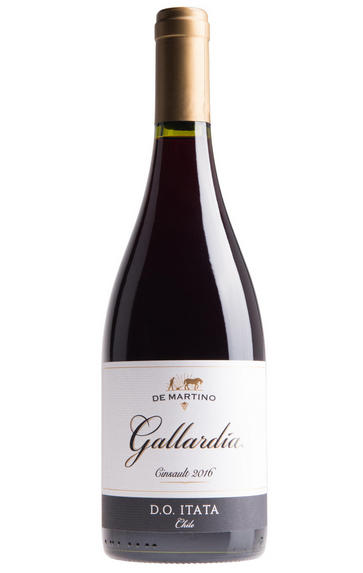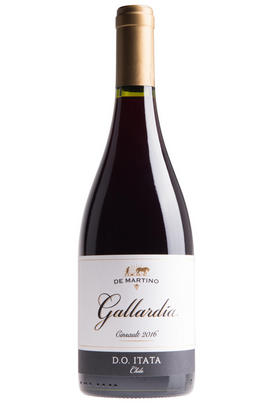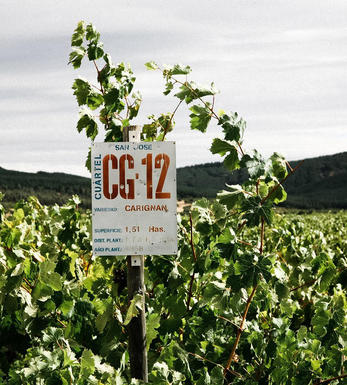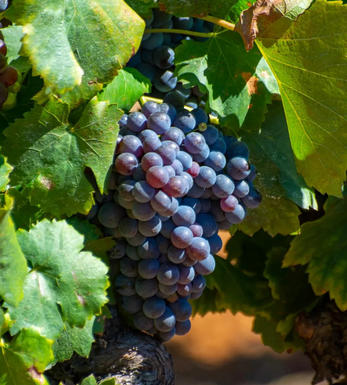
2016 De Martino Gallardía del Itata Cinsault, Itata Valley

Critics reviews
Luis Gutirrez - 28/04/2017
About this WINE

De Martino
De Martino is one of the most progressive and exciting names on the Chilean wine scene, deservedly named Chilean Winery of the year in 2011. Through a network of intellectual partnerships and vineyard acquisition, it has quickly built up a reputation for organic viticulture of the highest quality, farming from over 350 different vineyards.
The corporate vision focuses on sustainability, terroir, and, by logical extension, excellence. By concentrating on the very best sites for the varieties in question, be they in Limari, Elqui or Maipo, and by the development of a world class winemaking team, De Martino now sits at the very top of the Chilean vinous hierarchy.
The Alto Piedras vineyards make up 5 hectares of the sub-Denominacion of the Isla de Maipo, a de facto island as the vines are surrounded by two branches of the Maipo River. Two other self-evident truths are located in the nomenclature; firstly that the terrain is rocky, volcanic gravel to be precise and secondly that the vines are quite high up. Chile’s indigenous grape, Carmenère, is here aged for 18 months in new French oak.

Cinsault
Cinsault (pronounced "sin-so") is a red grape variety known for its versatility and contributions to various wine regions worldwide. It has a rich history, primarily in the Languedoc region of southern France, but it has spread to many other wine-producing areas due to its adaptability to different climates.
Cinsault grapes are medium-sized with thin skins, typically dark blue to black in colour. The vines are hardy and drought-resistant grapevine, making them suitable for warm and arid climates. They are particularly well-suited to Mediterranean regions and thrive in areas with hot summers.
While Cinsault is mainly used in red wine production, it is also sometimes used in rosé wines, adding light and fruity character. It is often blended with other grape varieties to enhance the wine profile.
The variety tends to exhibit a range of flavours, including red berries, cherries, and sometimes a hint of spices. When used in rosé wines, it can bring out more floral and watermelon notes.
Tannins are typically on the lower side, which can make them more approachable and enjoyable in their youth. The variety is often used in blends to soften and round out more tannic grape varieties.
Cinsault has been a key component in traditional blends in southern France, such as in Châteauneuf-du-Pape wines. Over time, it has gained popularity in other wine regions as winemakers recognize its potential for producing high-quality wines.


Buying options
Add to wishlist
Description
Designed to be on the table with food, the 2016 Gallarda del Itata Cinsault red is now D.O. Itata, as the law changed in 2015. Before that year, the wines produced with Cinsault and Pas grapes were only allowed the appellation Secano Interior, not Itata, as they were not considered noble enough to carry the name of the place. This is produced with fruit from a 34-year-old ungrafted, dry-farmed vineyard in Guarilihue in the commune of Coelemu. It fermented in stainless steel and was put in bottle the same year of the harvest, after some four months in tank. The nose has a sweet sensation of fruit, a wine of thirst, easy to drink but serious enough to show the influence of the granite soils. There is a big difference between this wine fermented in stainless steel and the ones fermented in concrete or terracotta amphorae. 15,168 bottles produced.
Luis Gutirrez - 28/04/2017
wine at a glance
Delivery and quality guarantee